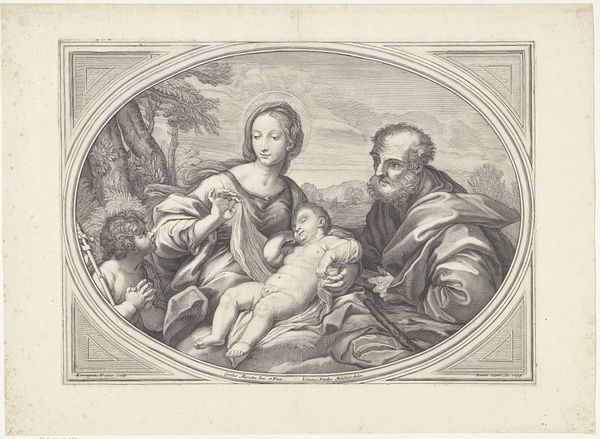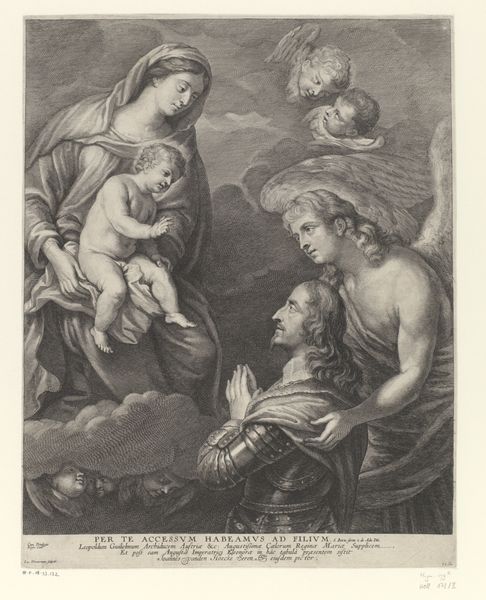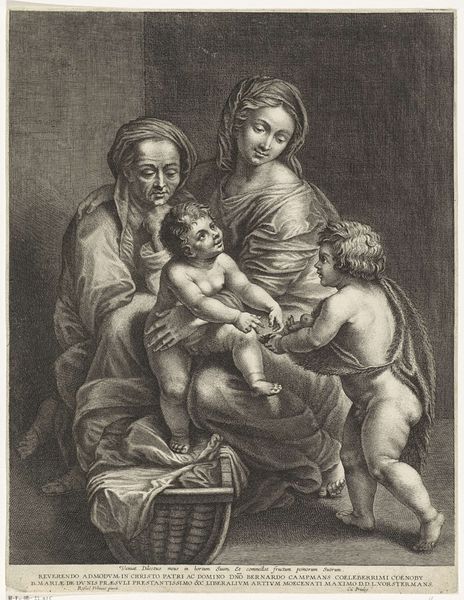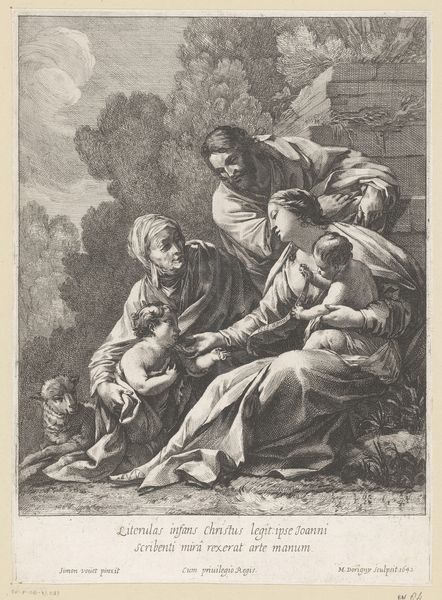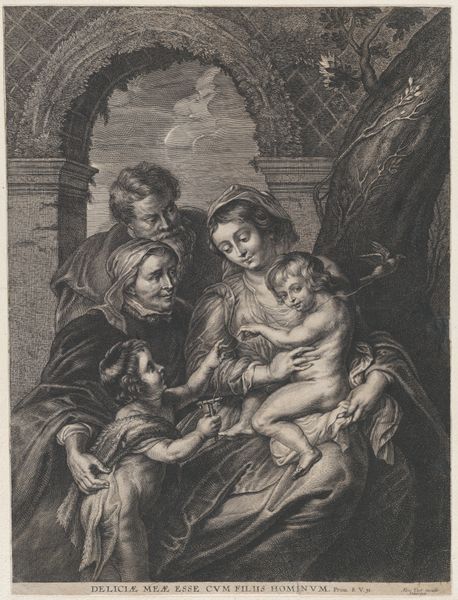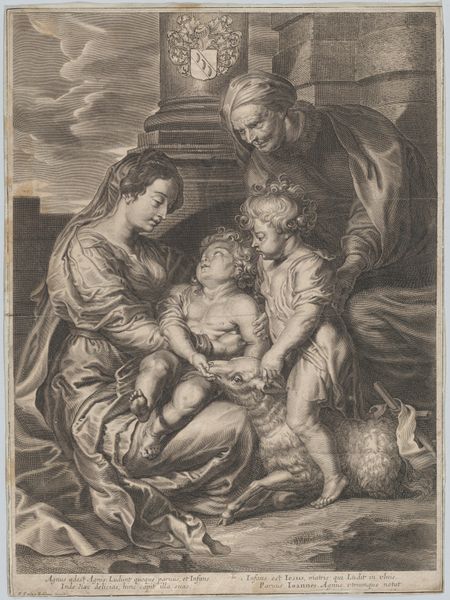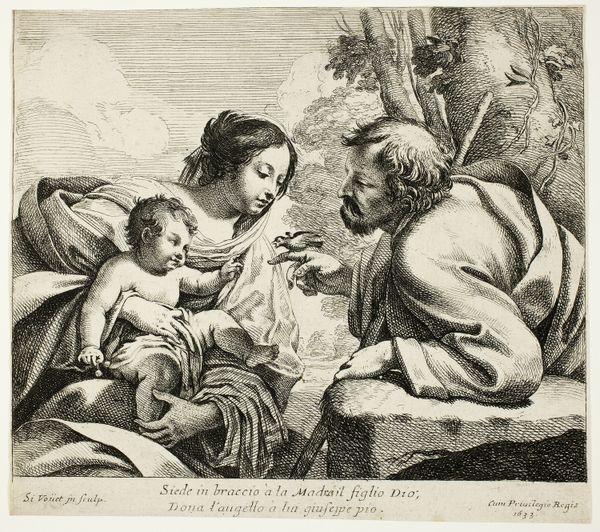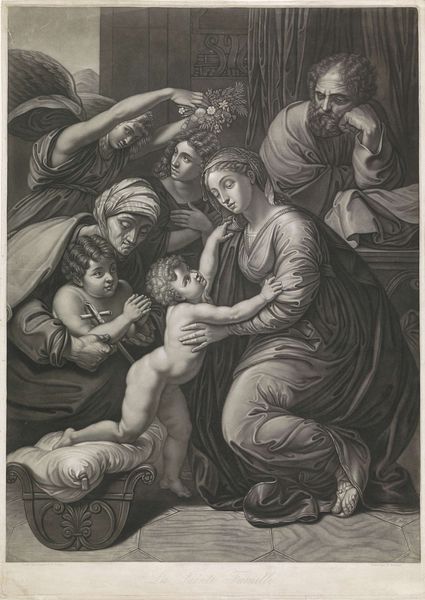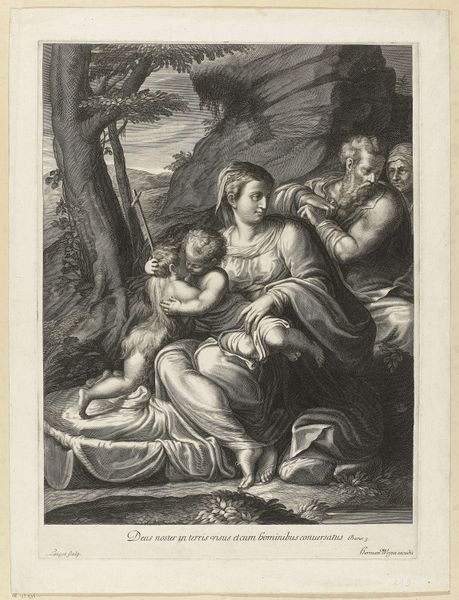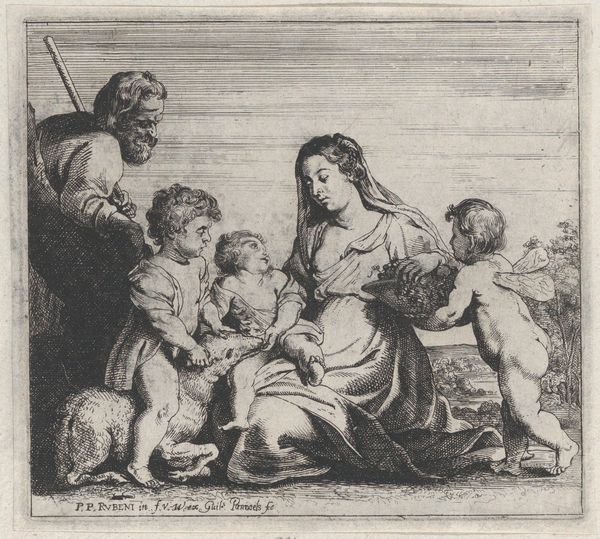
De Heilige Familie met Johannes de Doper in een landschap 1658 - 1677
0:00
0:00
#
pencil drawn
#
facial expression drawing
#
light pencil work
#
pencil sketch
#
charcoal drawing
#
charcoal art
#
portrait reference
#
pencil drawing
#
portrait drawing
#
charcoal
Dimensions: height 215 mm, width 330 mm
Copyright: Rijks Museum: Open Domain
Editor: This is "The Holy Family with John the Baptist in a Landscape," made sometime between 1658 and 1677 by Wallerant Vaillant. It’s currently housed at the Rijksmuseum. It looks like a charcoal drawing, and I'm struck by how intimate and domestic it feels, even with the cherubs floating in the sky! How do you interpret this work? Curator: Well, the grouping itself - the Holy Family and young John the Baptist - speaks volumes. Notice how John is presenting the lamb? It’s not just a cute animal. In Christian iconography, the lamb is a powerful symbol of Christ's sacrifice. Here, the artist foreshadows Christ's destiny even in this serene setting. Editor: That’s fascinating! So even a seemingly simple detail carries so much weight? Curator: Absolutely. The landscape also plays a role. It's not just a backdrop, but a space of both safety and precarity. It emphasizes the Holy Family's separation from society. Ask yourself: why depict the Holy Family outdoors rather than in a domestic interior? How might the family be at odds with its culture? Editor: Perhaps the landscape points to their role as shepherds, protectors? It hints at the larger world, with its dangers and possibilities? Curator: Precisely! Consider those cherubs too. What do they represent to you? Are they simply decorative, or do they indicate divine approval, acting as silent witnesses to the scene? The artist, Vaillant, encourages a deeper consideration of how images transmit our emotional understanding of biblical narratives. Editor: I never thought about the location so literally! Now, considering these characters, gestures and symbols, I wonder how the drawing's symbolism spoke to people in the 17th century? Curator: That’s a great question. The image allowed viewers of the time to experience a more personal connection with sacred figures, bridging the earthly and divine through relatable family dynamics. Editor: I see. Thanks! I now see a symbolic complexity beneath what first appeared to be a sweet family moment. Curator: Indeed, by understanding these layers, we appreciate how visual culture actively preserves memory and meaning through the ages.
Comments
No comments
Be the first to comment and join the conversation on the ultimate creative platform.

